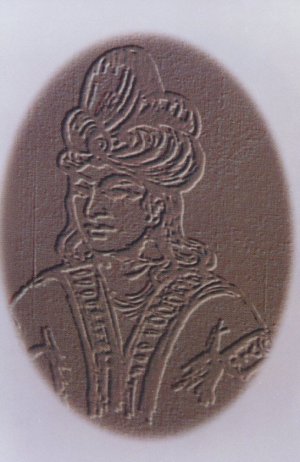
https://www.google.co.in/search?hl=en&q=ashok+stambh&btnG=Search
Ashoka
Ashoka (Devanāgarī: अशोक, IAST: Aśoka, IPA: [aˈɕoːkə], 304–232 BC), popularly known asAshoka the Great, was an Indian emperor of the Maurya Dynasty who ruled almost all of the Indian subcontinent from 269 BC to 232 BC.
One of India's greatest emperors, Ashoka reigned over most of present-day India after a number of military conquests. His empire stretched from present-day Pakistan, Afghanistan in the west, to the present-dayBangladesh and the Indian state of Assam in the east, and as far south as northern Keralaand Andhra.
He conquered the kingdom named Kalinga, which no one in his dynasty had conquered starting from Chandragupta Maurya. His reign was headquartered in Magadha(present-day Bihar, India).
He embraced Buddhism from the prevalent Vedic tradition after witnessing the mass deaths of the war of Kalinga, which he himself had waged out of a desire for conquest.
He was later dedicated to the propagation of Buddhism across Asia and established monuments marking several significant sites in the life of Gautama Buddha.
Ashoka was a devotee of ahimsa (nonviolence), love, truth, tolerance and vegetarianism. Ashoka is remembered in history as a philanthropic administrator.
In the history of IndiaAshoka is referred to as Samraat Chakravartin Ashoka- the Emperor of Emperors Ashoka.
His name "aśoka" means "painless, without sorrow" in Sanskrit (the a privativum and śoka"pain, distress").
In his edicts, he is referred to as Devānāmpriya (Pali Devānaṃpiya or "The Beloved Of The Gods"), and Priyadarśin (Pali Piyadasī or "He who regards everyone with affection").
Along with the Edicts of Ashoka, his legend is related in the later 2nd century Aśokāvadāna("Narrative of Asoka") and Divyāvadāna ("Divine narrative"), and in the Sri Lankan textMahavamsa ("Great Chronicle").
Ashoka played a critical role in helping make Buddhism a world religion.[1]
As the peace-loving ruler of one of the world's largest, richest and most powerful multi-ethnic states, he is considered an exemplar ruler, who tried to put into practice a secular state ethic of non-violence.
The emblem of the modern Republic of India is an adaptation of the Lion Capital of Ashoka.














